Making a kitchen countertop out of wood is a rewarding and fulfilling DIY project that not only enhances the aesthetic appeal of your kitchen but also provides a durable and functional surface. The first step in this process is selecting the right type of wood. Hardwoods such as oak, maple, and walnut are popular choices due to their durability and resistance to wear and tear. These woods have tight grains that prevent moisture absorption, making them ideal for kitchen environments. Softwoods like pine, while cheaper and easier to work with, are less durable and more prone to dents and scratches.
Once you’ve selected your wood, the next step is to measure your countertop space accurately. This includes accounting for any sinks, appliances, or other fixtures that will be incorporated into the countertop. Precision in measurement ensures that your countertop fits perfectly and reduces the need for adjustments later on. It’s also important to consider the thickness of the wood; a standard thickness for kitchen countertops is around 1.5 inches, providing a sturdy and substantial surface.
Cutting the wood to the correct dimensions is a critical step. Using a circular saw or table saw, make precise cuts according to your measurements. For a seamless look, you can join multiple pieces of wood together using wood glue and clamps. Ensure the joints are tight and allow the glue to dry completely. For added strength, you can use dowels or biscuits in the joints. Sanding the wood is crucial for a smooth finish. Start with coarse grit sandpaper and gradually move to finer grits until the surface is smooth to the touch. Pay special attention to the edges and corners to avoid splinters and rough spots.
After sanding, it’s time to apply a finish to the wood. Finishing not only enhances the beauty of the wood but also protects it from moisture and stains. There are various finishes to choose from, including oil, varnish, and polyurethane. Oil finishes, such as tung or linseed oil, penetrate the wood and provide a natural look, but require regular reapplication. Varnish and polyurethane create a hard, protective surface that is more resistant to water and stains, making them ideal for kitchen countertops. Apply multiple coats, allowing each coat to dry thoroughly before applying the next.

Installing the countertop involves securing it to the base cabinets. This is typically done using screws or brackets. Ensure that the countertop is level and securely fastened. If you’re incorporating a sink, you’ll need to cut out a hole for it. This can be done using a jigsaw. Measure carefully and use a template if available to ensure a precise cut. Once the hole is cut, you can install the sink according to the manufacturer’s instructions.
To maintain the beauty and longevity of your wood countertop, regular care and maintenance are essential. Clean the surface regularly with a mild soap and water solution, and avoid using harsh chemicals or abrasive cleaners. To prevent water damage, wipe up spills promptly and use cutting boards and trivets to protect the surface from hot pots and sharp knives. Periodically, you may need to reapply the finish to keep the wood looking its best.
Wood countertops can also be customized with various design elements. For instance, you can add an edge profile using a router to create a decorative edge. Common profiles include ogee, bullnose, and beveled edges. These details can add a touch of elegance and uniqueness to your countertop. Additionally, you can incorporate inlays or contrasting wood strips for a more intricate design.
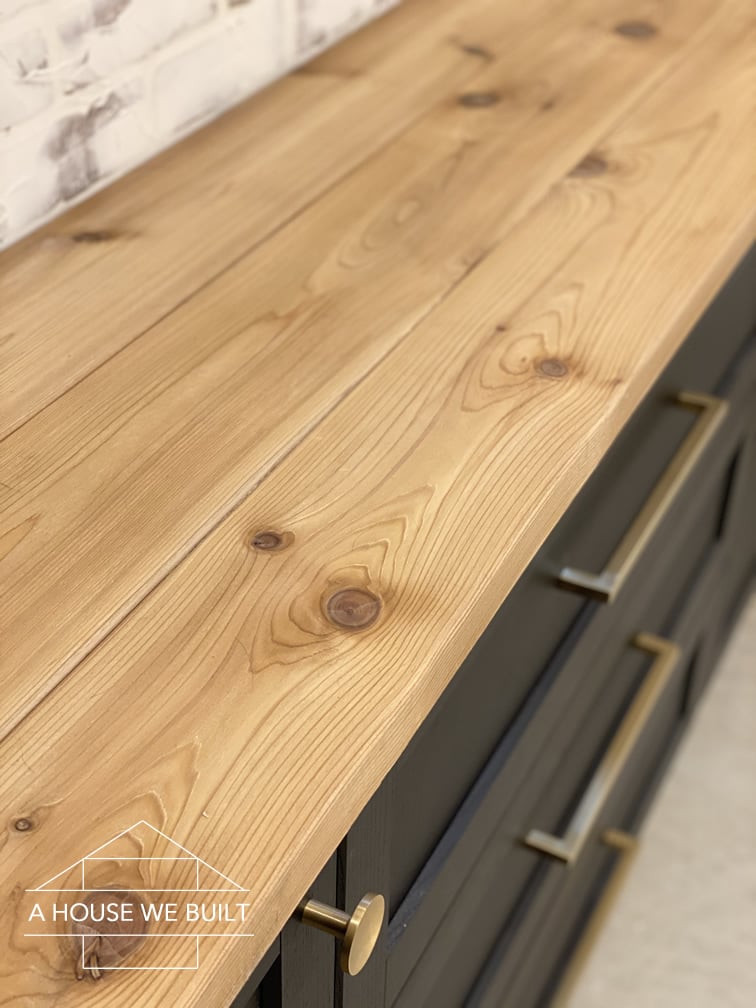
Another important aspect of wood countertops is their environmental impact. Wood is a renewable resource, and by choosing sustainably sourced wood, you can create an eco-friendly countertop. Look for wood certified by the Forest Stewardship Council (FSC) or similar organizations, which ensures that the wood comes from responsibly managed forests.
It’s also worth considering the overall style of your kitchen when choosing and designing your wood countertop. Wood countertops can complement a variety of kitchen styles, from rustic farmhouse to sleek modern. The natural warmth and beauty of wood add character and charm, making it a versatile choice for any kitchen design.
If you’re new to woodworking, it’s a good idea to start with a smaller project or seek advice from experienced woodworkers. There are many resources available, including online tutorials, woodworking classes, and community workshops. Don’t be afraid to ask for help or guidance as you embark on your countertop project.
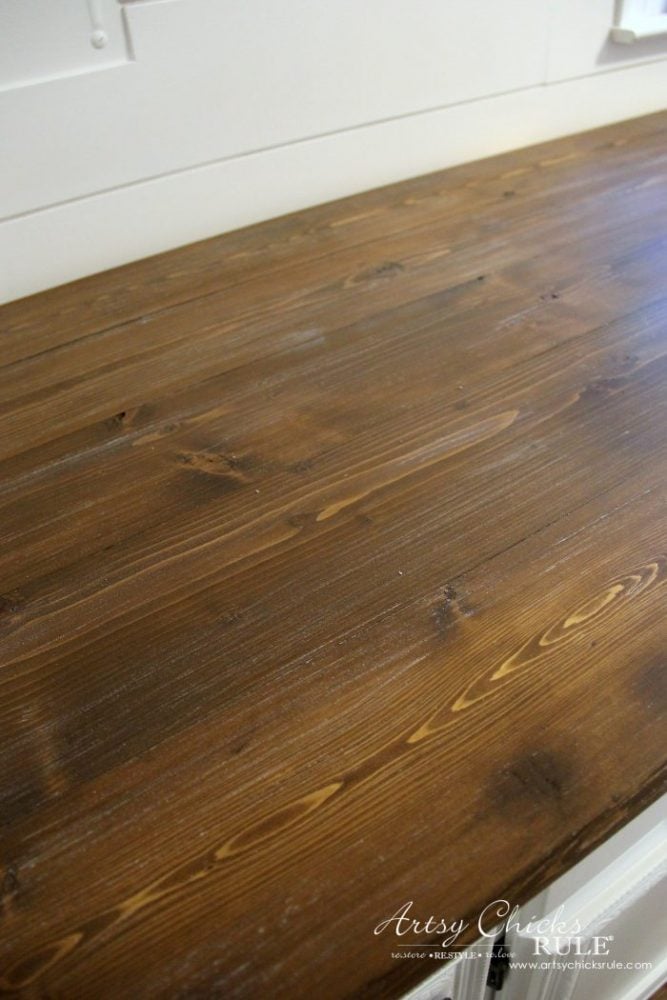
Safety is another crucial consideration. Always wear appropriate safety gear, such as goggles, gloves, and a dust mask, when working with wood and power tools. Ensure your workspace is well-ventilated and free of hazards. Taking the time to work safely will help prevent accidents and ensure a successful project.
In terms of budget, wood countertops can be a cost-effective option compared to other materials like granite or quartz. However, the cost can vary depending on the type of wood and the complexity of the design. It’s important to plan your budget carefully and consider all the materials and tools you’ll need.
Lastly, enjoy the process! Creating a wood countertop is not only about the end result but also about the satisfaction of crafting something with your own hands. Take your time, pay attention to detail, and appreciate the beauty of the wood as you work with it.
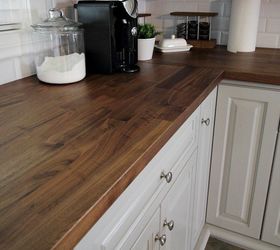
Common mistakes to avoid when making a wood countertop include:
- Inaccurate Measurements: Precise measurements are crucial. Measure multiple times to ensure accuracy.
- Poor Wood Selection: Choosing the wrong type of wood can lead to durability issues. Opt for hardwoods like oak, maple, or walnut.
- Improper Joint Techniques: Secure joints are essential for stability. Use wood glue and clamps, and consider dowels or biscuits for added strength.
- Inadequate Sanding: Skipping or rushing the sanding process can result in a rough surface. Gradually move from coarse to fine grit sandpaper.
- Neglecting Finish: Not applying a proper finish can leave the wood vulnerable to moisture and stains. Use multiple coats of oil, varnish, or polyurethane.
- Ignoring Maintenance: Regular cleaning and reapplication of finish are necessary to maintain the countertop’s beauty and longevity.
- Safety Oversights: Always use safety gear and ensure your workspace is safe and well-ventilated.
- Skipping Sink Cutouts: Measure and cut sink openings carefully to avoid misalignment.
- Not Planning for Expansion: Wood can expand and contract with humidity changes. Leave room for expansion to prevent warping.
- Incorrect Installation: Secure the countertop properly to the base cabinets and ensure it is level.

How do I choose the right type of wood for my countertop?
When selecting wood for your kitchen countertop, consider durability, aesthetics, and maintenance requirements. Hardwoods such as oak, maple, and walnut are popular choices because of their strength and resistance to wear. They have tight grains, making them less prone to absorbing moisture, which is crucial in a kitchen environment. Additionally, consider the color and grain pattern of the wood to match your kitchen’s design. Softwoods like pine can be used, but they are less durable and more prone to dents and scratches, requiring more maintenance.
What tools do I need to make a wood countertop?
To make a wood countertop, you’ll need several tools, including a circular saw or table saw for cutting the wood to size, a jigsaw for cutting out sink openings, and a router for creating edge profiles. Sanding equipment, such as a belt sander or random orbital sander, is essential for smoothing the surface. You’ll also need clamps and wood glue for joining pieces of wood, screws or brackets for securing the countertop to the base cabinets, and safety gear like goggles, gloves, and a dust mask. Having the right tools will make the project more manageable and help achieve professional results.
How do I finish a wood countertop?
Finishing a wood countertop involves applying a protective layer to enhance the wood’s appearance and protect it from moisture and stains. Start by sanding the wood to a smooth finish, then apply a finish such as oil, varnish, or polyurethane. Oil finishes like tung or linseed oil penetrate the wood and provide a natural look but require regular maintenance. Varnish and polyurethane create a hard, protective surface that is more resistant to water and stains, ideal for kitchen use. Apply multiple coats, allowing each to dry thoroughly before the next, to ensure a durable and attractive finish.

How do I maintain a wood countertop?
Maintaining a wood countertop involves regular cleaning and periodic reapplication of the finish. Clean the surface with a mild soap and water solution, avoiding harsh chemicals and abrasive cleaners. Wipe up spills promptly to prevent water damage, and use cutting boards and trivets to protect the surface from hot pots and sharp knives. Depending on the type of finish, you may need to reapply it every few months to a year. Oil finishes typically require more frequent maintenance, while varnish and polyurethane finishes offer longer-lasting protection.
Can I install a wood countertop myself, or do I need a professional?
Installing a wood countertop is a feasible DIY project if you have basic woodworking skills and the right tools. The process involves measuring and cutting the wood, joining pieces together, sanding, finishing, and securing the countertop to the base cabinets. However, precision is key, and mistakes can be costly. If you’re not confident in your abilities or if the project involves complex elements like sink cutouts, you might consider hiring a professional. Professional installation ensures accuracy and can save time and effort.
What are the benefits of a wood countertop compared to other materials?
Wood countertops offer several benefits compared to other materials like granite, quartz, or laminate. They provide a warm, natural aesthetic that can enhance the beauty and character of your kitchen. Wood is also a renewable resource, making it an eco-friendly option if sourced responsibly. Additionally, wood countertops are relatively easy to install and can be a cost-effective choice. They can be customized with various finishes, edge profiles, and design elements. However, they require regular maintenance to keep them looking their best, and care must be taken to avoid damage from water and heat.

Vanlife: Stunning DIY Wooden Countertop For Under $100
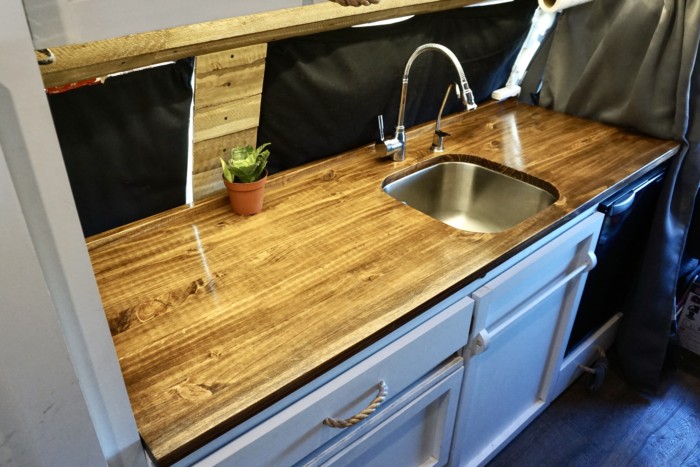
DIY Wide Plank Butcher Block Countertops

Homemade Wood Countertop Plans You Can DIY Easily

How To Make A DIY Wood Countertop (easier than you thought
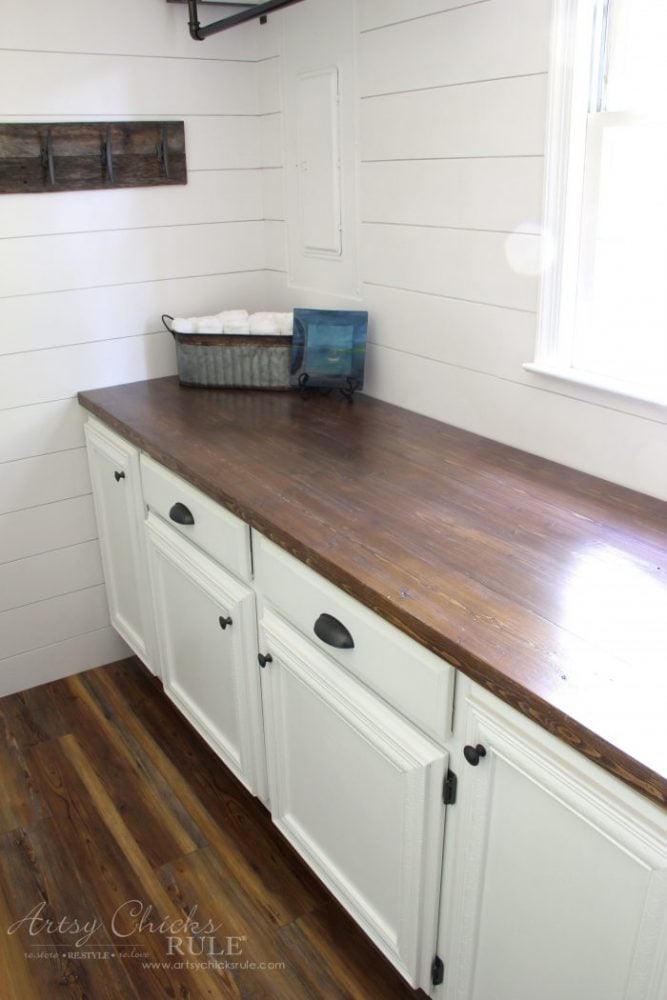
Related articles: